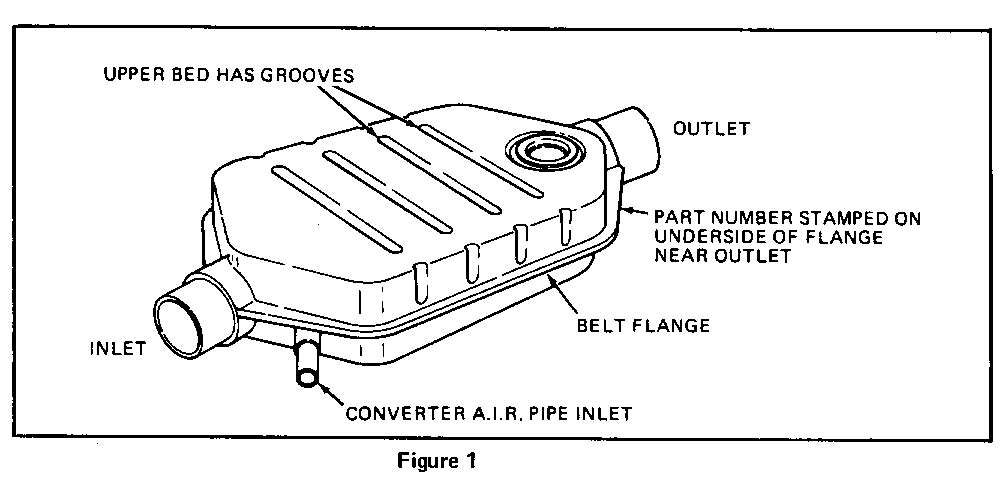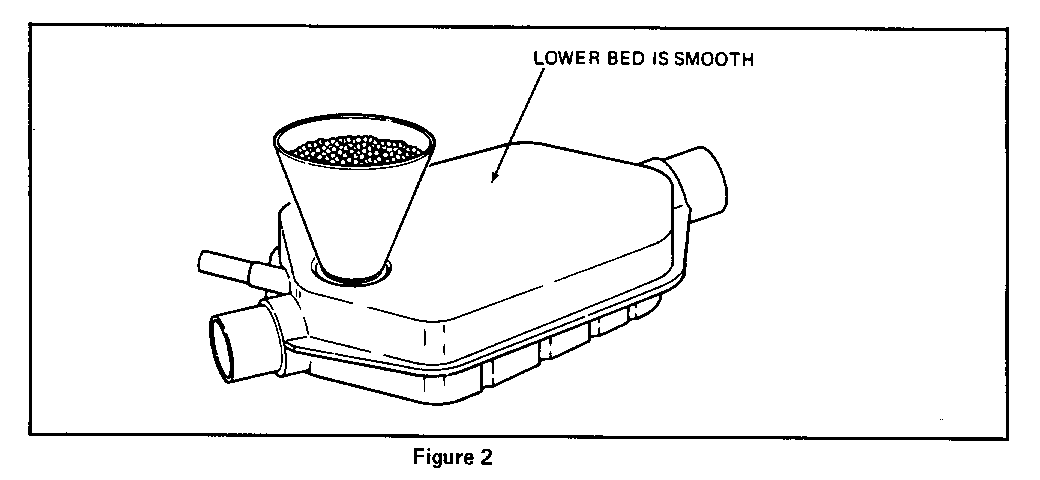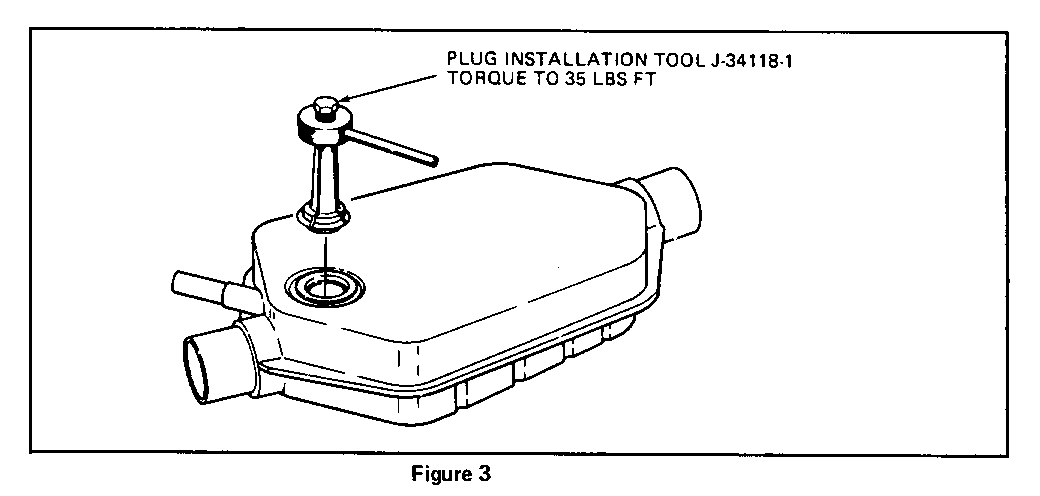CAMPAIGN: RESTRICTED CATALYTIC CONVERTER REPLACEMENT

MODELS/YEARS 1983 5.0L V-8 GASOLINE ENGINES (VIN CODE Y)
CONDITION
General Motors has determined that some 1983 Oldsmobile Toronado, Ninety-Eight, Delta 88, Custom Cruiser and Cutlass Supreme models equipped with a 5.0L V-8 gasoline engine may develop a restricted exhaust due to the catalytic converter becoming plugged.
VEHICLES INVOLVED
Involved are certain 1983 Toronado, Ninety-Eight, Delta 88, Custom Cruiser, and Cutlass Supreme models equipped with a 5.OL V-8 gasoline engine (VIN Code Y).
Vehicles that have had the catalytic converter replaced since approximately June 1, 1983 with the new type basketed converter assembly or that have had the converter kit part number listed in this bulletin and in Dealer Technical Bulletin 83-T-25 and 83-T-25A installed, need not have this campaign performed.
DEALER ACTION
To correct this condition on vehicles involved, the catalytic converter will require replacement.
Dealers are to service all vehicles subject to this campaign at no charge to the owner, regardless of mileage, age of vehicle, or ownership, from this time forward.
Whenever a vehicle subject to this campaign is taken into your used vehicle inventory, or it is in your dealership for service in the future, you should take the steps necessary to be sure the campaign correction has been made before reselling or releasing the vehicle.
SERVICE PROCEDURE
1. Install seat and fender covers and raise the vehicle on a hoist.
Inspection: The converter need not be replaced:
If it is the new type basketed converter assembly, part number 25056622; or
If it is the converter used in Dealer Technical bulletin 83-T-25 or 83-T-25A, part number 25056894.
The part numbers are stamped on the bottom of the inboard flange near the converter inlet. Refer to Figure 1.
Proceed to Step 15 if replacement of the converter is not required.
2. If the converter is of the original type, remove both converter clamps and brackets.
3. Remove the A.I.R. clamp and pipe.
4. Remove the converter (using a torch to heat the joints).
CAUTION:
The catalytic converter beads contain platinum, palladium and/or rhodium. Additionally, the beads may be finely coated with lead compounds. Therefore, precautions should be taken to minimize dust generation during the replacement procedure. These precautions include:
A. Catalyst dust should be controlled by wetting with water prior to bead removal as described in Step 5.
B. The use of a suitable dust mask, rubber gloves and safety glasses is recommended when handling catalyst beads.
C. Applicable OSHA standards should be reviewed.
D. Allow converter to cool before handling.
5. Stand the old converter upright on the iniet end and pour 16 ounces of water into the outlet end to control catalyst dust.
6. Using a hammer and chisel, remove the fill hole plug from the lower bed. (The smooth side of the converter is the lower bed side). See Figures 1 and 2.
7. Hold the converter over a clean pan (J-34155-2) and empty the catalyst beads by shaking. It may be necessary to tap the converter belt flange with a hammer to loosen the beads.
8. Pour the beads into a sifting pan (J-34155-1) and sift to remove under sized beads.
9. Prop the new converter up at a 45 degree angle with the lower bed fill hole at the top.
10. Using funnel J-34155-3 pour the sifted beads into the lower bed of the new converter. If additional beads are required to completely fill the lower bed, it will be necessary to obtain a lower bed bead kit from the parts department. Excess beads from the kit should be saved in a clean container for future use.
11. Lay the converter down on a flat surface with the lower bed fill hole on top. Figure 2.
12. Insert the fill plug into the lower bed fill hole. The fill plug outer rim must rest against the converter body.
13. Insert the plug installer tool (J-34118) into the fill plug and tighten to a torque of 47 N - m (35 lbs. ft.). Refer to Figure 3.
14. Install the converter on the vehicle by reversing steps 1 through 4 of this procedure.
15. Install a Campaign Identification Label. Each vehicle modified in accordance with the instructions outlined in this Service Procedure will require a Campaign Identification Label. Each label provides a space to include the campaign number, the five (5) digit dealer code of the dealer performing the campaign service, and the date vehicle was campaigned. This information may be inserted with a typewriter or ballpoint pen. When installing label, clean the surface of the radiator upper mounting support and apply the campaign label where it is readily visible.
PART INFORMATION
Parts are to be obtained from WDDGM using the following part numbers.
Description Usage Part Number ----------- ------ ----------- Converter with Upper Beads 1983 5.OL 25057007 (Includes Fill Hole Plug)
Lower Bed Bead Package* 5.OL 25056895 (If Needed To Fill Converter)
Converter Front Exhaust Clamp 5.OL 15595206 (If Needed)
To ensure these parts will be obtained as soon as possible, they should be ordered from GM Parts (WDDGM) on a C.I.O. order with NO special instruction code, but order on an advise code (2).
*A lower Bed Bead Package, when used along with the beads removed from the old converter, will complete approximately 10 vehicles.
Additional fill hole plugs if required may be ordered using part number 8998202.
Parts are to be retained for disposition by zone personnel.
WARRANTY INFORMATION
Converter Kit Failure Labor Labor Operation Part No. Code Operation Hours --------- -------- ---- --------- ----- Inspection Only - 96 V3010 .2
Inspect & Replace 25057007 96 V3011 .9 Catalytic Converter
Parts will be credited at dealer cost plus 30%.
.1 hour for clerical administration may be added to the above operations.



General Motors bulletins are intended for use by professional technicians, not a "do-it-yourselfer". They are written to inform those technicians of conditions that may occur on some vehicles, or to provide information that could assist in the proper service of a vehicle. Properly trained technicians have the equipment, tools, safety instructions and know-how to do a job properly and safely. If a condition is described, do not assume that the bulletin applies to your vehicle, or that your vehicle will have that condition. See a General Motors dealer servicing your brand of General Motors vehicle for information on whether your vehicle may benefit from the information.
